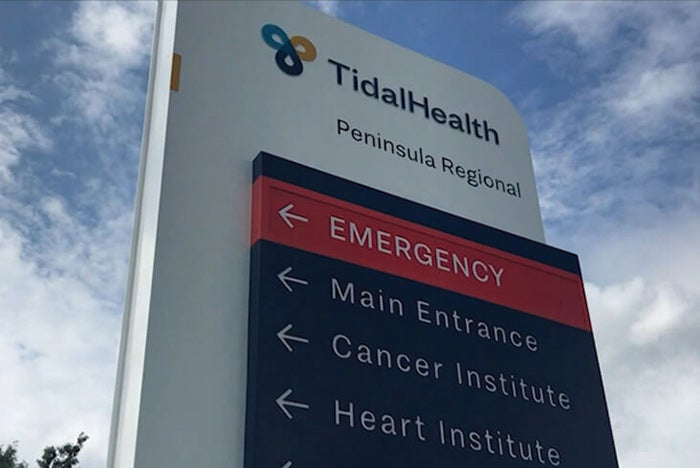Communication tech improves ED flow

Caption goes here
Credit goes here
TidalHealth Peninsula Regional, Salisbury, Md., has served its community for more than 120 years. It is one of the region’s largest tertiary care hospitals with 266 patient beds, and employs approximately 3,300 physicians, staff and volunteers. Annually, the hospital serves nearly 500,000 patients with more than 78,000 inpatient days per year.
TidalHealth Peninsula Regional, like many other health care organizations, has experienced emergency department (ED) overcrowding in recent years. Based on its 2019 census, the Level III trauma center averaged over 90,000 ED visits per year and 15,000 ED admissions.
The issue has caused a domino effect that impacts average ED wait times and satisfaction among patients and staff. In fact, the average time from a patient’s ED arrival to their placement in a hospital bed was 340 minutes. During the height of the pandemic, the challenge was compounded, as the hospital was admitting an average of 30 inpatients per day while only discharging four to five patients.
Continually improving ED throughput has been a top priority at TidalHealth Peninsula Regional given the increased rates of ED use. However, the organization struggled to implement the tools to facilitate the efficient ED provider-to-hospitalist collaboration that would produce meaningful change.
The hospital knew it needed a communication overhaul to help improve throughput.
“Even before the COVID-19 pandemic, we were experiencing increasing patient volumes,” says Glenn Hornstein, M.D., ED director at TidalHealth Peninsula Regional. “We needed to take actionable steps to improve ED wait times and throughput.”
Hornstein and his team determined that a technology-driven, systemwide approach would be most successful for improving emergency care.
“The ED doesn’t operate in isolation,” he says. “If we were going to substantially improve quality patient outcomes and reduce costs, this would have to be more than just an emergency department initiative.”
When Christopher Snyder, D.O., chief quality officer and hospitalist at TidalHealth Peninsula Regional, heard that the ED wanted to improve throughput, he suggested the team consider how technology from Spok Inc. could help streamline providers’ communication.
A longtime Spok customer for paging and contact center solutions, TidalHealth Peninsula Regional had been one of the first organizations to implement the company’s Spok Go solution.
Spok Go is a unified communication platform that provides care team collaboration, closed-loop communication and secure messaging to enhance workflows. The scalable enterprise solution helps to ensure reliability and security while connecting the entire care network with Amazon Web Services-backed cloud architecture. The software is flexible and open, which means staff can use the best devices for their roles.
“Other areas of the hospital were implementing Spok Go to collaborate and communicate more efficiently,” Snyder says. “Given the results we were seeing in other departments, I knew Spok Go could help facilitate better collaboration between the ED and inpatient areas.”
Using Spok Go secure messaging, the entire care team gained a self-service tool to make it easy to reach the correct provider and share important patient information directly from their personal mobile devices. Additionally, Spok Go automatically incorporates directory information and on-call schedules to streamline workflows.
By adding the TidalHealth Peninsula Regional monthly on-call schedule into the Spok Go system, anyone on the care team could quickly message the correct on-call provider.
“With Spok Go, we were able to introduce technology into old-school processes and dramatically improve some of the disorganized patient transfer processes,” Snyder says.
Using a collaborative, technology-driven approach, TidalHealth Peninsula Regional has achieved substantial improvements in patient flow, including a 44-minute improvement in boarding time, which is the time of admitting decision to time the patient transfers to a bed, and a 31-minute reduction in overall ED length of stay.




